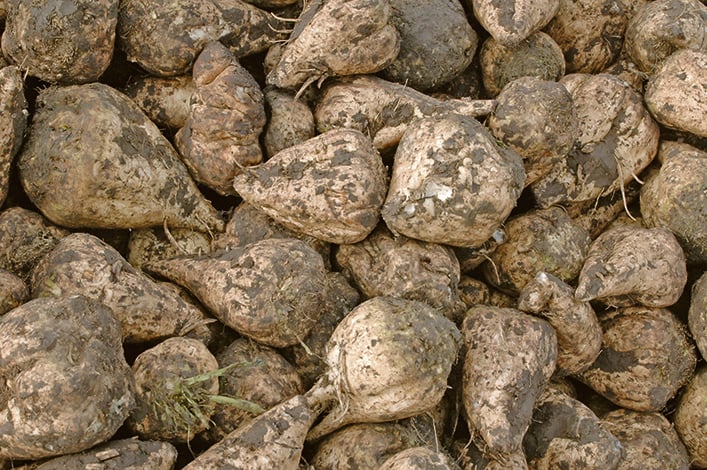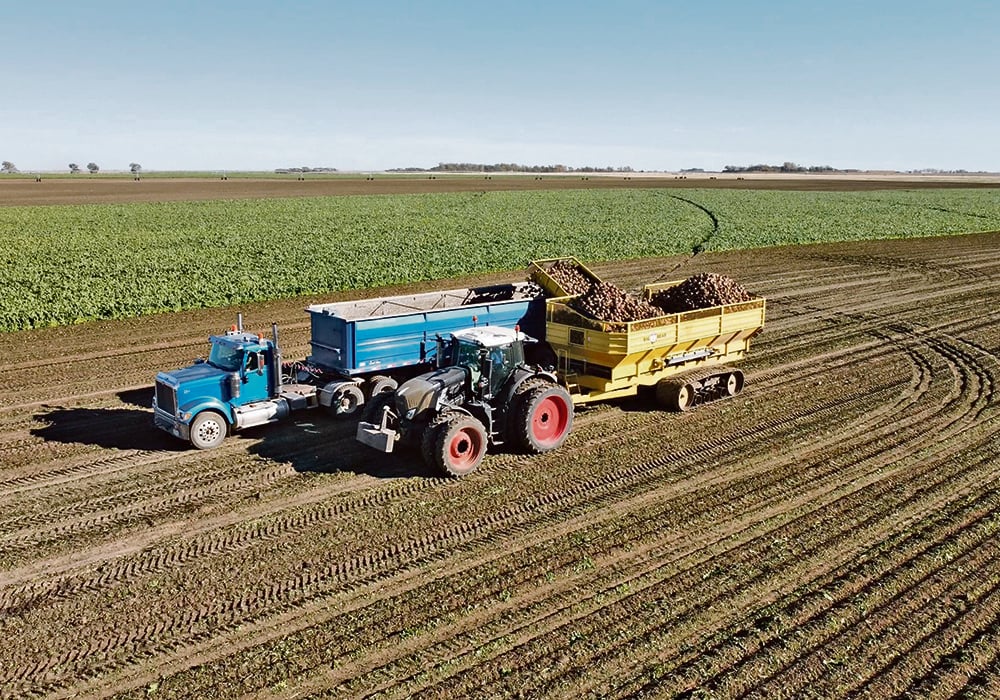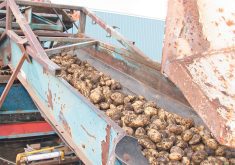Producers began growing the crop in the early 20th century with the manual labour coming from a variety of sources
From a sweetener for your morning coffee, to baking muffins or going the extra mile and making your own jams and jellies, Rogers or Lantic brand of sugar, depending on the province it is marketed in, is a staple in western Canadian kitchen pantries.
This sugar is grown and refined in southern Alberta, from the sugar beet farms in the Lethbridge area and in the refinery at Taber. The area dedicated to this crop is 96 sq. kilometres, roughly from Enchant to Lethbridge.
The history of sugar beets in Alberta started early in the 20th century as a crop that required large amounts of manual labour.
Finding people to work these sugar beet farms has a turbulent history. During the Second World War, the fields were worked by Japanese-Canadians forced to work on these farms or be sent to internment camps.
After the war, that labour force was replaced with new Ukrainian immigrants, who were escaping displacement camps located throughout Europe. The opportunity to work on Canadian sugar beet farms was a more favourable option than returning to Soviet-occupied Ukraine.
Ukrainian historians Orysia Olijnyk and Vadym Olijnyk, co-authors of Ukrainian Sugar Beet Immigrants, said that then-Canadian Minister of Agriculture James Garfield Gardiner made a trip or possibly several trips to Europe to encourage new immigrants through the Sugar Beet Project.
They said Lethbridge sugar beet farmers preferred families because they felt it would be more stable than solitary workers. While hundreds of immigrant workers and their families came to southern Alberta through this project between 1947-1950, many other Ukrainian workers came through other means such as sponsorship, or with help from family members who had previously settled in the area.
The number of people who came through, while documented, remains unknown, as access to these ship manifests have remained restricted for 75 years.

Before this new wave of labour arrived, Japanese-Canadians were given the tough choice of either working on these farms or having families separated into gender based internment camps. Between 1940-46, 4,000 of these families came to work on either Alberta or Manitoba sugar beet farms, according to the Canadian Museum of Human Rights.
For the Ukrainians, in exchange for paid travel to Canada and landed immigrant status, families who had teenage boys or adult men of working age signed labour contracts.
“The head of the families would sign a contract and they were for a year. That didn’t mean a calendar year. It really meant the season,” said Olijnyk.
The new immigrant work on beet farms occurred at sporadic times during the growing season. First, there was springtime thinning of the new beet sprouts. Then a later seasonal thinning and weeding, followed by the late fall harvest.
“Very often, the climate conditions were cold already, and sometimes there was even snow or wet. … the only mechanisation that there was the tractor which would come and lift the beets,” Olijnyk said.
The Ukrainian immigrants on these farms faced isolated conditions. And after having lived close together in their previous communities, or in the displaced peoples camps, it drove many to leave shortly after their contractual obligations to the sugar beet farmers were over.
“I would say not only did many leave as opposed to many stay, but many left for Toronto. That was the big draw. That was the big city. Plus, there was already a large Ukrainian community there from the previous (immigrant wave),” said Olijnyk.
However, a fair number of the sugar beet immigrants who came from 1947-50 stayed in the Lethbridge area to form a strong Ukrainian community.
Today, there is only one sugar beet refinery in Canada, in Taber, refining up to 100,000 to 125,000 tons of beets to produce a million tons of sugar.
“We only produce eight percent of the Canadian domestic consumption (of sugar),” said Gary Tokariuk, president of Alberta Sugar Beet Growers.
Manitoba and Quebec used to also grow sugar beets, but stopped in the 1990s. Regions of Ontario still grow sugar beets, but they are shipped to the United States to be processed.
Under the name Rogers or Lantic, depending on the province the sugar is sold in, the Taber sugar beet refinery processes area beet crops into the various forms such as granulated, powdered and liquid sugar.
“We service markets in Alberta, Saskatchewan and Manitoba,” said Tokariuk. “We do a lot of liquid sugar. We service Coca-Cola in Calgary…. We actually supply the Alberta beekeepers with sugar for when bees (have) no flowers to hunt down.”

Sugar beets like hot days and cool nights. In southern Alberta, all sugar beets are grown on irrigated acres and it takes about 500 millimetres of water to grow a decent crop, said Tokariuk.
“We have to be very careful about our fertility program because if you add too much nitrogen, you get a poor sugar content. We’re very cognizant of not over-fertilizing, especially nitrogen,” he said.
Tokariuk said he would like the sugar beet market to increase to about 20 percent of Canada’s sugar consumption, but he doesn’t see that happening soon. For the beet farmers, sugar beets were able to steadily provide up to 40 percent of the household income. Over the past number of years this trend has been on the decline.
“There’s so many alternatives now with sweeteners and things that sugar seems to be a static consumer product,” he said.















